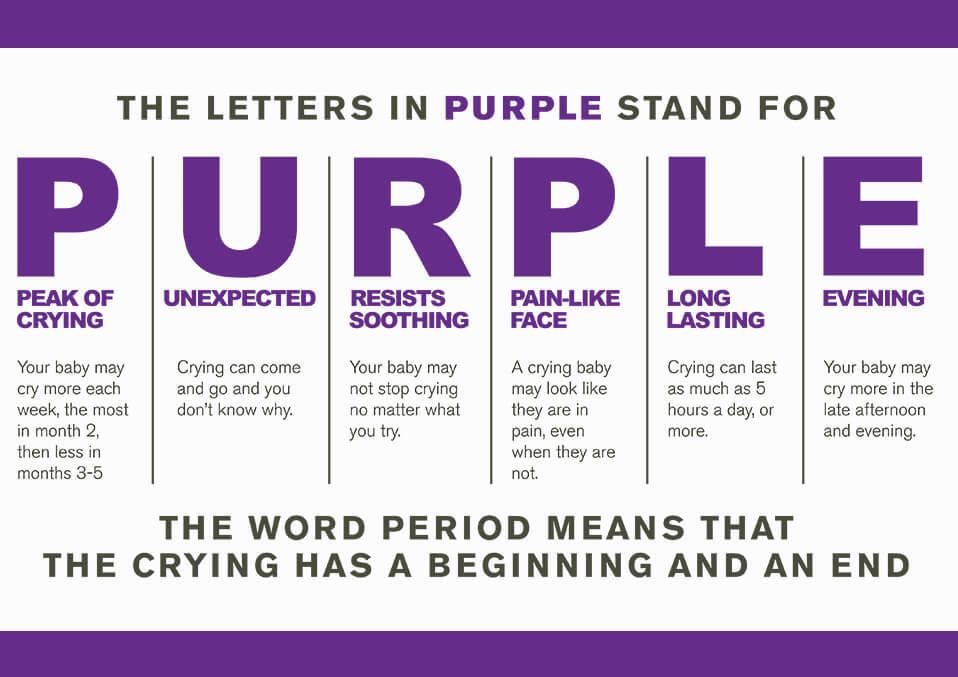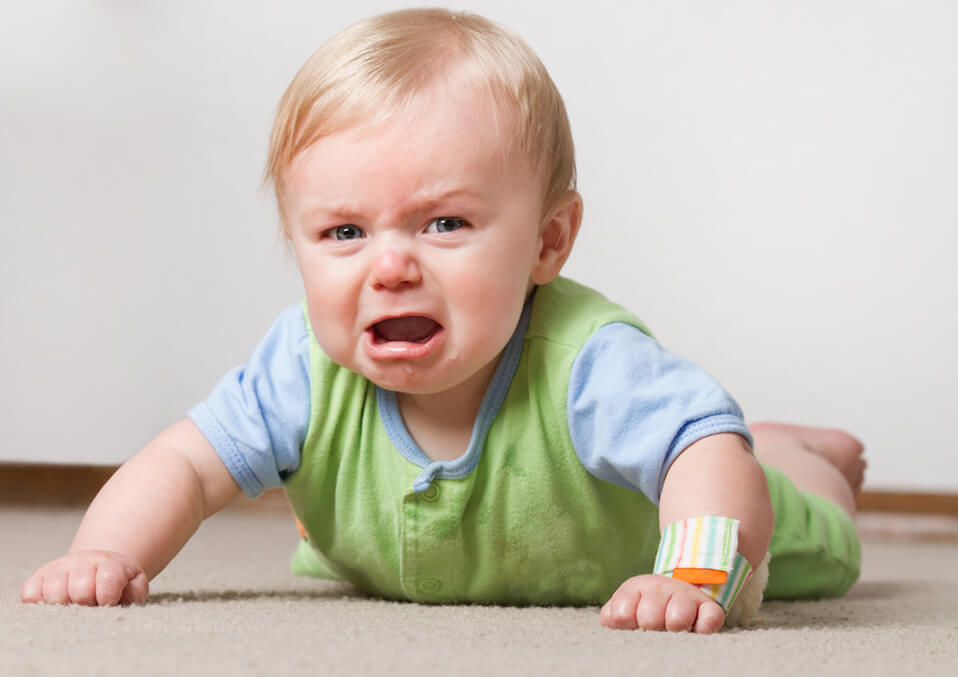
Overview:
All babies cry and they cry a lot; in much different time duration and their cries can denote a lot of varying messages to the parent.
Usually the frequency and severity of the baby crying increases during the first three months; it can vary depending on the baby; after reaching the peak of crying that can usually be described as the baby crying for 4-5 hours; it usually decreases over time.
Many parents; doctors, and pediatricians over time have developed a pattern of babies crying and this pattern is developed forming The “Purple” Crying which is a unique acronym that describes the overall crying pattern of the baby; from intensity and duration of the cry.
What is purple crying?

A baby’s cry can be a very excruciating moment for a parent, it can be a worrying; troublesome and stress-inducing situation; whether you know what to do or you’re clueless on what is happening on the baby, you can always rely on PURPLE Crying to know and understand more the infant’s defense mechanism.
Crying is a form of signal which communicates the baby’s need for food or attention; although you may provide these essential things to your baby; he or she may still cry a lot.
Crying too much can sometimes be mistaken for a serious condition and you may brand your infant has colic, but it is important to note that your baby crying is a vital part of your baby’s natural and healthy growth and development.
PURPLE Crying program is developed by medical professionals and scientists who have discovered a similarity between human infants and other breastfeeding animals, they noticed that infants and other breastfeeding animals have a similar developmental stage of crying sometimes these animals would even have more crying in the first months compared to human infants.
To simply put; PURPLE Crying is a term used to describe a colic baby or a baby who persistently cries and there seems to be nothing you can do to soothe your baby to stop.
This usually lasts for about 2 weeks or 2-3 months. During the PURPLE Crying stage; the baby cries for longer hours and these may cause worry and discomfort to the parents.
What does the purple acronym signify?

The acronym PURPLE stands for:
- The peak of crying. The baby cries a lot. Usually cries frequently during the first weeks up to the second month, it usually subsides during the 3rd month.
- Unexpected. The baby may unexpectedly cry without any reason at all.
- Resists relief. No matter how many times you comfort your baby; rocking, singing, bouncing, swaying them—they will still cry like you have done something wrong to them, it seems like you cannot do anything to soothe them.
- Pain-like face. Your baby appears to be crying in pain or may have a general discomfort in his look.
- Long-lasting. Your baby might cry for a longer duration compared to your expected crying duration; it may last for up to 6 hours.
- Evening. Your baby might cry during the afternoon and evening.
What is the significance of purple crying?

The PURPLE crying is important for parents like you to know because this says a lot about how your coping style during these uncomfortable and anxiety-filled moments; although the main purpose of PURPLE Crying is to reassure the parents that their babies are undergoing through a normal stage of development.
This will also prevent parents from doing anything that might harm the baby; this is because during these months the baby is really expected to cry a lot and as a result, parents may shake the baby a lot causing brain injuries; head trauma, or SBS an acronym for a condition called Shaken baby syndrome.
The PURPLE crying program has a positive impact on reducing SBS-related baby hospitalizations; this made parents feel more secure and relaxed during those periods.
Complications of frequent crying of the baby or colic?
As mentioned above; frequent crying of the baby is normal and healthy; however, if you’re baby frequently cries and has other symptoms such as a sudden decrease in weight, vomiting, or rashes, it is best to consult your doctor as it may be a possible sign that your baby has a serious disease needs to be cured.
But in general; frequent crying of the baby without any of the symptoms said above is perfectly fine and causes no complications to the baby.
What are effective ways to stop soothe or minimize baby’s cry?
There are a number of techniques parents use to minimize or sometimes stop the baby from crying, some of the techniques are:
- The Rock and Sway Method, this is a method used by many parents who have sworn on its efficacy in stopping the baby from crying too much, to try this method you can walk; while holding your baby tightly and gently; you can also do this by standing and moving only on the same position, creating calm motions.
- Try Pacifier; it is also known as binky soother, teether or Dodie You can try pacifiers to help soothe the baby; offer it to the baby during nap time before bedtime.
- Use calming sounds; try playing white noise machines, you can also try singing your baby a relaxing and soothing songs, you can also create chants that will calm down the baby from crying.
- Rub the baby’s back, holding the baby while rubbing his or her back will aid in the baby’s digestion and calms down the baby, you can also gently rub the baby’s stomach gently to help his tummy digest the milk, it is also very soothing to the baby.
- Avoid Overstimulation or overseeing your baby, too much stimulation of the baby from the parent such as shaking, rocking or any kind of movements that can be over stimulating can cause the baby to cry more than often, also avoid bringing them to long trips wherein a vehicle is rapidly moving it could create discomfort to the baby which would lead them to cry more often, also it is important to take note when your baby is overseen, too much milk can cause bloating of the baby’ stomach which would make the baby cry more often.
Final notes
Always take note to have a diary in check to study your baby’s pattern of crying, it will save you time on over-analyzing your baby’s cry, and always remember to consult the doctor when you notice that your baby is losing weight, had frequent vomiting which is accompanied by frequent crying, your baby’s safety is a must.
Read also:
- Bruises on the Baby’s Skin
- How Long Should You Let Your Baby Cry?
- What To Do When Your Toddler Wakes Up Crying


